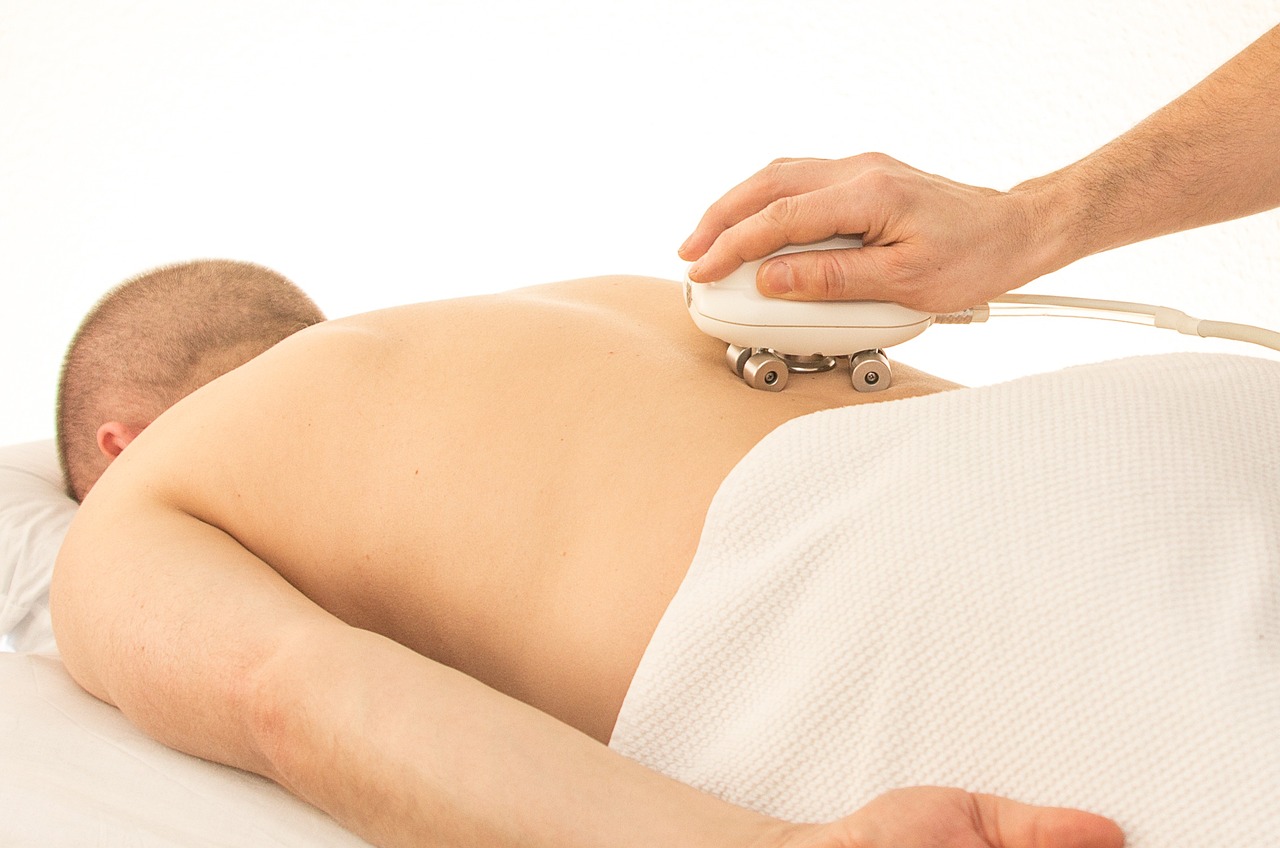Book Appointment Now

The Science Behind Non-Pharmacological Pain Management
Pain is a complex and multifaceted experience influenced by biological, psychological, and social factors. While pharmacological interventions, such as opioids and NSAIDs, have been the mainstay of pain management, the rise of the opioid crisis and increasing awareness of medication-related side effects have driven interest in non-pharmacological pain management (NPPM). This review explores the science underpinning NPPM, the mechanisms of action, and the evidence supporting various interventions, highlighting their role in complementing or substituting pharmacological approaches.
Our nursing experts can deliver 100% custom paper about the science behind non-pharmacological pain management according to your order instructions.
Write my nursing essay
Understanding Pain: A Multifaceted Phenomenon
Pain is classified by its origin and duration: acute, chronic, nociceptive, and neuropathic. It involves the activation of nociceptors (pain receptors) and subsequent processing in the spinal cord and brain. Chronic pain, in particular, involves maladaptive changes in the central nervous system, known as central sensitization, which perpetuates pain even in the absence of tissue damage (Woolf, 2011).
Non-pharmacological interventions target these processes by modulating nociception, altering perception, or addressing the psychological and social components of pain. These methods leverage the brain’s ability to regulate pain through neuroplasticity, endogenous opioid production, and the pain-gating mechanism.
Mechanisms Underpinning Non-Pharmacological Pain Management
- Endogenous Opioid System Activation: Techniques such as exercise, acupuncture, and meditation are known to stimulate the release of endogenous opioids, reducing pain perception (McEwen, 2017).
- Pain Gate Control: Non-pharmacological methods like transcutaneous electrical nerve stimulation (TENS) modulate pain by activating large nerve fibers, which inhibit pain signals in the spinal cord (Melzack & Wall, 1965).
- Neuroplasticity: Cognitive Behavioral Therapy (CBT) and mindfulness-based stress reduction (MBSR) alter the brain’s response to pain by promoting adaptive neuroplastic changes in regions such as the prefrontal cortex and anterior cingulate cortex.
- Psychological Modulation: Techniques like hypnosis, relaxation training, and music therapy work by addressing the emotional and psychological dimensions of pain, reducing stress and anxiety that exacerbate the pain experience.
Evidence-Based Non-Pharmacological Pain Management Techniques
1. Physical Interventions
Physical interventions focus on modulating the physiological components of pain through movement, stimulation, or manual therapy.
- Exercise Therapy: Exercise reduces pain through improved circulation, muscle strength, and the release of endorphins. Evidence supports its use in conditions like osteoarthritis, fibromyalgia, and chronic low back pain (Geneen et al., 2017).
- Acupuncture: By stimulating specific points on the body, acupuncture triggers the release of neurotransmitters like serotonin and endorphins, providing relief from chronic pain (Vickers et al., 2018).
- Massage Therapy: Massage increases blood flow, reduces muscle tension, and promotes relaxation, making it effective for musculoskeletal pain and stress-related conditions.
2. Neuromodulation Techniques
These methods focus on altering pain pathways through electrical or thermal stimulation.
- Transcutaneous Electrical Nerve Stimulation (TENS): TENS works by stimulating large nerve fibers, activating the pain gate control mechanism to inhibit pain transmission. It is particularly effective for neuropathic pain and post-surgical discomfort (Johnson, 2019).
- Heat and Cold Therapy: Applying heat increases blood flow and relaxes muscles, while cold reduces inflammation and numbs pain. Both are widely used for acute injuries and localized pain relief.
3. Cognitive and Behavioral Approaches
These approaches address the psychological dimensions of pain, helping patients reframe their pain experience and develop coping mechanisms.
- Cognitive Behavioral Therapy (CBT): CBT helps patients identify and modify negative thought patterns and behaviors related to pain. Studies show significant improvements in chronic pain conditions like fibromyalgia and migraines (Ehde et al., 2014).
- Mindfulness-Based Stress Reduction (MBSR): MBSR combines mindfulness meditation and yoga to promote relaxation and reduce the emotional intensity of pain. It has shown efficacy in chronic pain management, including in cancer patients (Brown & Jones, 2013).
4. Sensory-Based Therapies
These methods target the sensory dimensions of pain, providing relief through distraction or stimulation of other sensory modalities.
- Music Therapy: Listening to music has been shown to reduce pain perception by engaging reward pathways and reducing anxiety (Garza-Villarreal et al., 2014).
- Art Therapy: Expressive activities like painting and drawing provide a creative outlet for emotional processing, reducing stress and pain in chronic conditions.
5. Emerging Technologies
Advancements in technology have expanded the scope of non-pharmacological pain management.
- Virtual Reality (VR): VR immerses patients in engaging environments that distract from pain and reduce anxiety. It has shown promise in acute pain settings, such as burn wound care (Hoffman et al., 2019).
- Wearable Devices: Devices that deliver electrical or vibratory stimulation are being explored for their ability to provide portable, non-invasive pain relief.
Benefits of Non-Pharmacological Pain Management
Non-pharmacological pain management offers several advantages over pharmacological approaches, particularly for chronic conditions. These methods reduce reliance on medications, minimizing risks such as addiction, tolerance, and side effects. Additionally, they empower patients to take an active role in managing their pain, improving overall well-being and quality of life. Importantly, many non-pharmacological interventions are cost-effective and can be integrated into multidisciplinary care plans.
Challenges and Limitations
Despite its benefits, non-pharmacological pain management faces challenges. The effectiveness of some methods may vary depending on individual factors, such as patient preferences, cultural background, and comorbidities. Additionally, access to trained practitioners or specialized equipment, such as acupuncture or VR systems, may be limited in certain regions. The need for long-term commitment to interventions like exercise or mindfulness can also be a barrier for some patients.
Integrating Non-Pharmacological Methods into Practice
The most effective pain management strategies often combine pharmacological and non-pharmacological approaches. Integrative care models allow healthcare providers to tailor interventions to each patient’s unique needs, ensuring comprehensive and patient-centered pain management. Education plays a key role in this integration, as patients and providers alike must understand the science and benefits of non-pharmacological options to adopt them effectively.
Non-pharmacological pain management represents a paradigm shift in addressing pain holistically. By targeting the physiological, psychological, and social dimensions of pain, these methods offer a complementary or alternative approach to traditional pharmacological treatments. The growing body of evidence supporting interventions such as exercise, mindfulness, and neuromodulation underscores their effectiveness and relevance in modern healthcare. As the focus on patient-centered care continues to expand, non-pharmacological pain management is poised to play an increasingly vital role in improving outcomes and enhancing quality of life.
References
- Brown, C. A., & Jones, A. K. (2013). Meditation experience predicts less negative appraisal of pain: A controlled cross-sectional study. Pain, 153(2), 322-331. https://doi.org/10.1016/j.pain.2011.10.027
- Ehde, D. M., Dillworth, T. M., & Turner, J. A. (2014). Cognitive-behavioral therapy for individuals with chronic pain: Efficacy, innovations, and directions for research. American Psychologist, 69(2), 153-166. https://doi.org/10.1037/a0035747
- Geneen, L. J., et al. (2017). Physical activity and exercise for chronic pain in adults: An overview of Cochrane Reviews. Cochrane Database of Systematic Reviews, 4(CD011279). https://doi.org/10.1002/14651858.CD011279.pub3
- Garza-Villarreal, E. A., et al. (2014). Music reduces pain and increases functional mobility in fibromyalgia patients. Frontiers in Psychology, 5, 90. https://doi.org/10.3389/fpsyg.2014.00090
- Hoffman, H. G., et al. (2019). Virtual reality as an adjunctive non-pharmacologic analgesic for acute burn pain during medical procedures. Annals of Behavioral Medicine, 41(2), 183-191. https://doi.org/10.1007/s12160-010-9248-7
- McEwen, B. S. (2017). Neurobiological and systemic effects of chronic stress. Dialogues in Clinical Neuroscience, 8(4), 367-381. https://doi.org/10.31887/DCNS.2006.8.4/bmcewen
- Vickers, A. J., et al. (2018). Acupuncture for chronic pain: Update of an individual patient data meta-analysis. Journal of Pain, 19(5), 455-474. https://doi.org/10.1016/j.jpain.2017.11.005
- Woolf, C. J. (2011). Central sensitization: Implications for the diagnosis and treatment of pain. Pain, 152(3 Suppl), S2-S15. https://doi.org/10.1016/j.pain.2010.09.030







